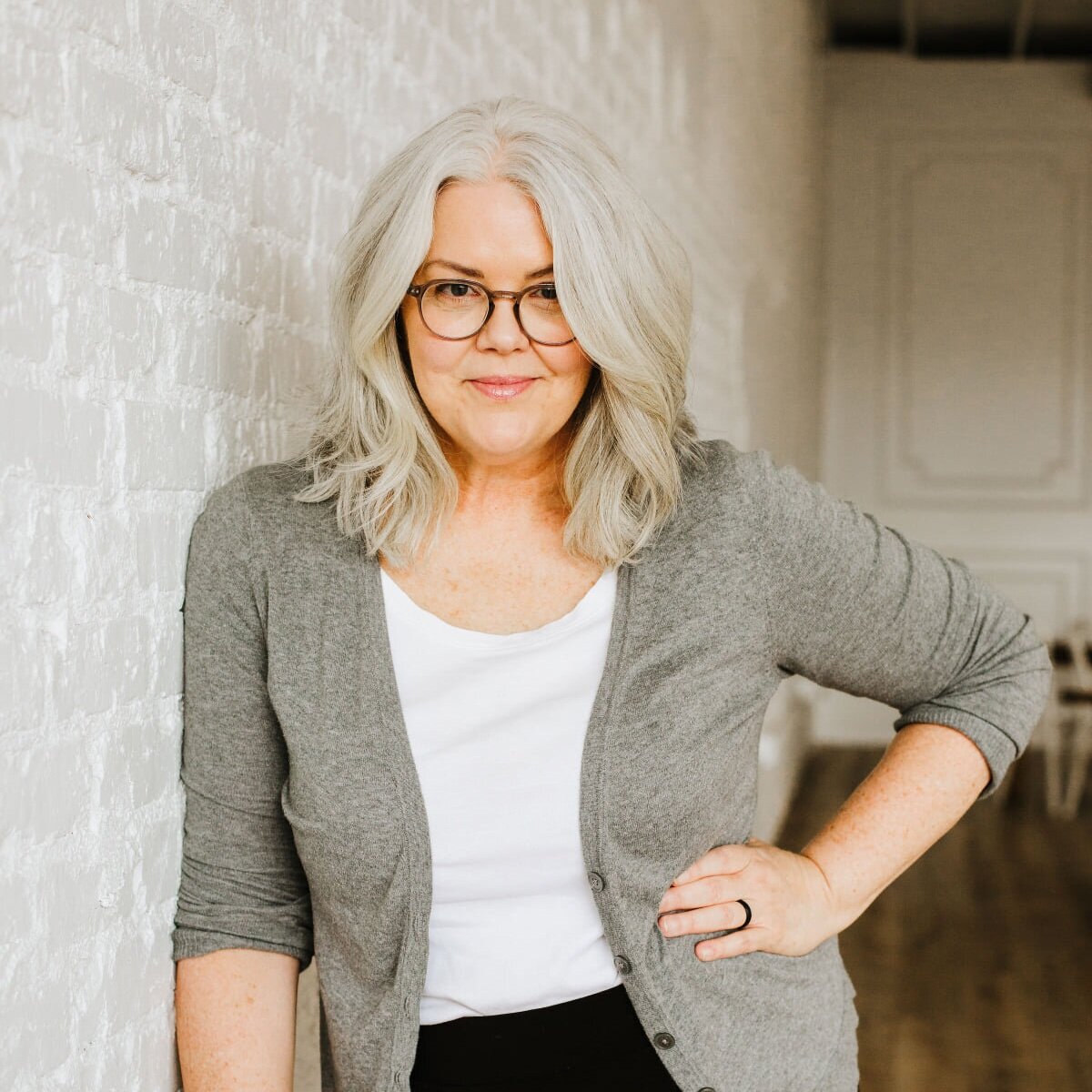Your homepage is arguably the most important page of your website. It’s the most frequently visited and most pivotal page, for sure.
I’d also argue it’s the most memorable. Because when readers land on a homepage for the first time, they’re seeking answers:
Am I in the right place?
Is this for me?
Will this help me?
It’s our job as business owners to provide those answers, but it’s also an opportunity to show off what you have to offer—the set of unique skills, services, and perspectives you bring to your business. That extra TLC on your homepage pays off in building brand awareness, loyalty, and new customers.
Here are 5 ways to spice up your existing homepage to make it extra enticing for your site visitors.
First Impressions Matter
Have you heard the expression “above the fold?” It’s the bit of content that you see when you first land on a new webpage. The term started in newspapers with that coveted lead story, and it’s grown more complicated today where almost half of users browse online from their phones.
So why does this matter? Because most site visitors will decide in just 50 milliseconds if they like your site or not, and act accordingly. It’s very important to make sure that in those first moments after landing on your site, they know they’re in the right place. Use these pointers to make a great first impression.
Design tips:
Streamline your top navigation window and focus on what’s absolutely necessary. Or switch to a hamburger menu for a more polished look.
Avoid pop-up ads, arrows, and any other distractions.
Keep design minimal. White space is your friend.
Copy tips:
Lead with a benefits-driven headline. Talk directly to your reader and demonstrate the value they receive by choosing you.
Include a value proposition sub-head that lists the who/what/where of your business so readers know they’re in the right place
You can add a CTA, but you don’t have to. And be wary of adding more than one, unless you’ve got two distinct audiences at play.
Use Your Headers
Section headers (or crossheads) describe the content you’re about to read. They’re typically larger and more scannable than body copy. Often, site visitors will skim a page looking for the information they’re after. If they find it, they’ll click and keep reading; if they don’t or they’re confused, they’ll likely click that dreaded back button.
I see two major missed opportunities for headers on your homepage:
Boring section headers: You know the ones: “Benefits,” “About Me,” “Products”. They’re clear, sure, but they aren’t exactly memorable. Pack more punch by focusing on the benefits and outcomes for your audience. For example, try these:
Products > See why over 3,500 women are raving about this t-shirt
About Us > Building a sustainable world for the future
Haphazardly placed headers: Think of your homepage as a more exciting table of contents. You only want to use section headers that are absolutely necessary to make your case and that direct to the right place. Be strategic in where and how you use section headers to accomplish this goal.
And one more tip: it’s OK to drop the punctuation. While it’s tempting to treat section headers like full sentences with proper grammar, punctuation is actually distracting and can cause a pause or break in the flow of reading. So unless it’s a question, there’s no need to end your headers with punctuation.
Let Others Do the Talking
Social proof can come in a lot of forms, but direct feedback, testimonials, or reviews from past customers are immensely important for earning trust.
Here’s how I recommend using social proof on your homepage:
A proof bar: use logos from businesses you've worked with in the past (service providers) or media outlets your product has been featured in (e-commerce).
Testimonials or reviews: You can really never have too many of these. TrustPilot ratings or board and industry ratings (for specialized fields) are also worth including.
Video reviews
Links to your blog, podcast, and social media pages: Yes, this is a form of social proof. It’s like saying: “Look, I do know my stuff” and “See, other people choose to hang out with me online”. Plus, these are great easy ways for new readers to get a sense of who you are and what you stand for as a brand.
Offer an Easy “Yes”
Most of us like to browse before we buy, and there’s a journey we go through as customers that gets us from Who are you? to Here’s my credit card.
That journey (or stages of awareness) looks something like this:
Top of the funnel: Understanding what they need, understanding the problem they want to solve, and recognizing there’s a solution to that problem
Middle of the funnel: Recognizing that you may be the solution to the problem, learning and recognizing how your products and services can help
Bottom of the funnel: Understanding your products, interest in your products, and feeling ready to purchase a product.
Since the majority of site visitors are still at the top and middle of their customer journey when they visit your homepage, try getting micro-consents where you can. In other words, encourage small commitments or yeses along the way, like:
Provide an email address to watch a webinar, receive a discount or newsletter, or download a guide.
Respond to an email for a drawing, a mention on your podcast, or a free 10-minute audit.
Follow you on social for savings, access to gated content, or a mention or link back to their page.
Wherever you can, look for opportunities throughout your marketing (and homepage) for those micro-commitments to build trust and help your prospects reach the next stage of the customer journey.
Measure the Results
We almost never get it right the first time, and experimentation helps you tweak (and tweak again) until you find the perfect mix of content for your homepage. Set yourself up for success with these metrics, which you can find using a free Google Analytics account:
Bounce & exit rate: If people are leaving your site after visiting your homepage, there’s likely a lack of clarity about who are you and how you provide value. Work on clarifying your messaging.
Dwell time: How long are visitors staying on your homepage? Are they making it down the page? If not, you may consider reorganizing your messaging hierarchy– or the order in which you’re introducing content. Compare dwell time against heat mapping or scroll data (using another free tool like Hotjar) to study which sections make people bounce the most. That can help you spot unclear or misplaced copy.
Customer pathways: Where are visitors going after they leave your homepage? Is there a pattern or trend you can spot and is that in line with your goals (aka where you want them to go)? Similarly, are there pages that people typically click on but then exit from? This points to a disconnect in the messaging. People think they’ll get one thing when they click on a link but instead get something else.
Sign-ups: Are you attracting new subscribers from the lead magnet or opt-in on your page? Is that number increasing month over month? Are people reading your free content? Clicking on your social links? If not, focus on clarity in these section headers, or try moving your ‘free value’ content up on your page.
Finally, I want to leave you with one last truth about “conversions”.
Real progress is not found in sales or gimmicks or marketing hacks. At the heart of every transaction is rapport and trust in the outcome. Your readers are human beings, after all, and they want what any of us do: to be seen, respected, and heard by you, the provider.
Focus on your reader’s needs and fellow entrepreneurs, and the conversions will follow.
The All-Access Pass gives you even MORE!
✨ Group Coaching every month, with the opportunity to be an AMSE Group Coach yourself!
✨ An exclusive discount in the AMSE Shop!
✨ A FREE 20-second snippet on our official podcast, Owning Up, to promote your business!
✨ A feature on the AMSE Blog - all about you and your business!
✨ Access to the AMSE Cohort, an immersive 7-week course with hands-on coaching through the Building Your Business the AMSE Way coursework with Moni Jefferson.
Heather is a fellow military spouse, conversion copywriter and digital marketing strategist. She helps small businesses and entrepreneurs grow their online presence through persuasive website copy and a solid SEO strategy. She’s currently stationed in Fort Leavenworth, KS, with her spouse and twin boys, who just started Kindergarten. You can learn more about her work at her website, HD Copywriting.



















